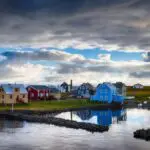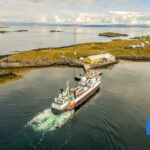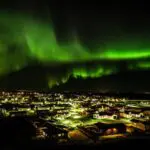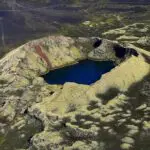So, how is Easter in Iceland? Despite having a state church, Icelanders are not particularly religious people. Those who believe in God describe it as a childlike faith rather than an actual belief.
Most Icelanders are confirmed members of the state church (or any other church in Iceland or with Siðmennt – Humanists Iceland). Most teenagers do it because everyone else does it, and they receive gifts. Why are we discussing confirmations? They usually occur around the Easter holiday.
Even if they are for many old religious relics, Icelanders enjoy their vacations. We’d never trade them for anything. When visiting Iceland in April, it is important to understand which days are holidays and which are not.
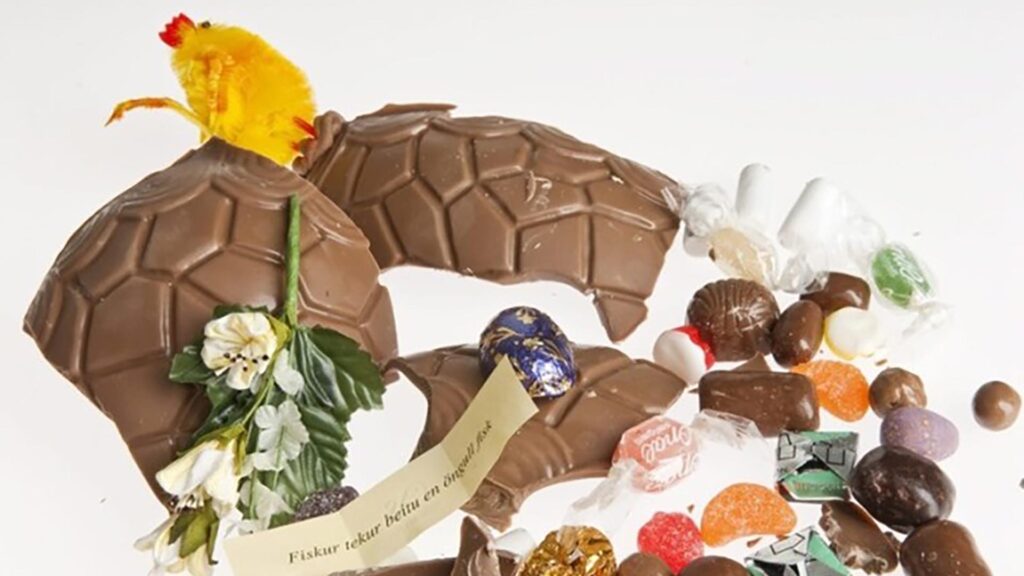
Easter Bank Holidays
Maundy Thursday in Iceland
Maundy Thursday is a national holiday in Iceland, unlike in many other countries. But don’t worry; it’s just like any other Sunday. However, as are many other stores and places, the liquor store will be closed. Museums and restaurants will most likely be open.
Good Friday and Easter Sunday in Iceland
Until 2019, holding any public celebration on Good Friday or Easter Sunday (and Christmas Day) was illegal. However, it was repealed in June of that year. That does not imply that everything will be accessible. Most stores, as well as many restaurants, will be closed. In most cases, bars will not open until late at night.
Some museums, like the National Museum of Iceland and the National Gallery of Iceland, will be open. Not all supermarkets will be open on Good Friday, and most will be closed on Easter Sunday.
Easter Monday in Iceland
You will find more stores closed on Easter Monday than on Maundy Thursday. On the other hand, restaurants are usually open, and supermarkets are open as if it was a Sunday. During the winter, many state-run museums are closed on Mondays.
Easter Eggs
The best thing about Easter in Iceland is the Easter Eggs for many. Heavenly chocolate eggs filled with candy! And, of course, the first thing Icelanders look for is the small paper with a proverb or saying.
Iceland’s Easter egg tradition is about 100 years old and thus relatively new. However, the history of eggs in Europe dates back much further.
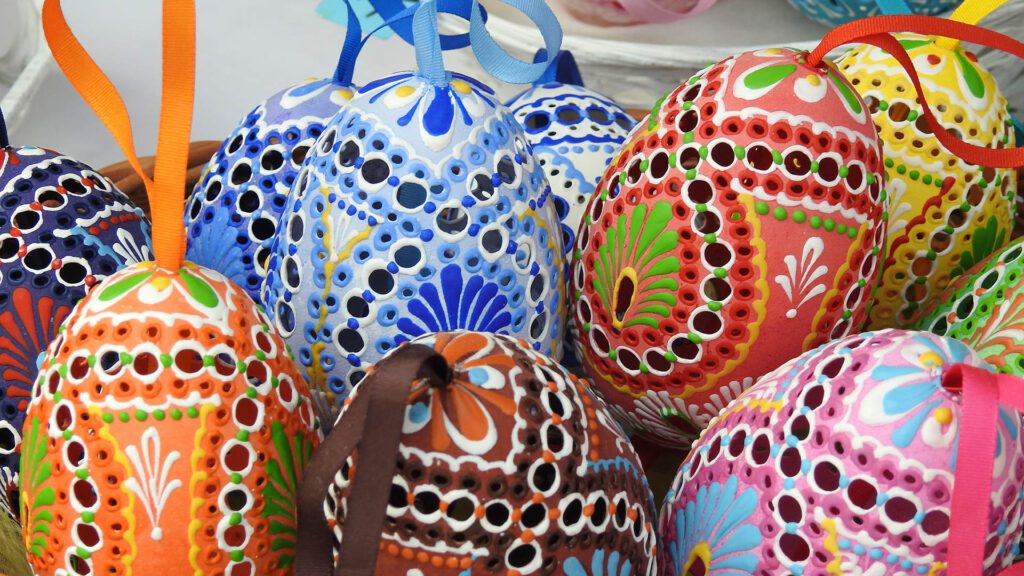
During the Middle Ages, tenants in Central Europe had to pay a tax several times a year, usually farm products. Eggs were in high demand around Easter in the spring because the hens had only recently resumed egg-laying after the winter break.
It soon became customary for landowners to distribute a fifth of these eggs to the needy. This tradition inspired the custom of giving Easter eggs to children. The eggs were blown out, decorated, and given as gifts at Easter.
The upper class began giving decorated eggs to each other in the 17th and 18th centuries. A small hole in the shell was made, and a small proverb, rhyme, or poem was inserted into the egg.
An Icelandic magazine from 1900 says: “It is customary here in Iceland to wish each other Happy Holidays at Easter time, and then Catholic people give each other decorated and painted eggs. Sometimes they’re eggs from birds but are often made from clay or gypsum. These eggs are called Easter eggs.”
Ancient Practice
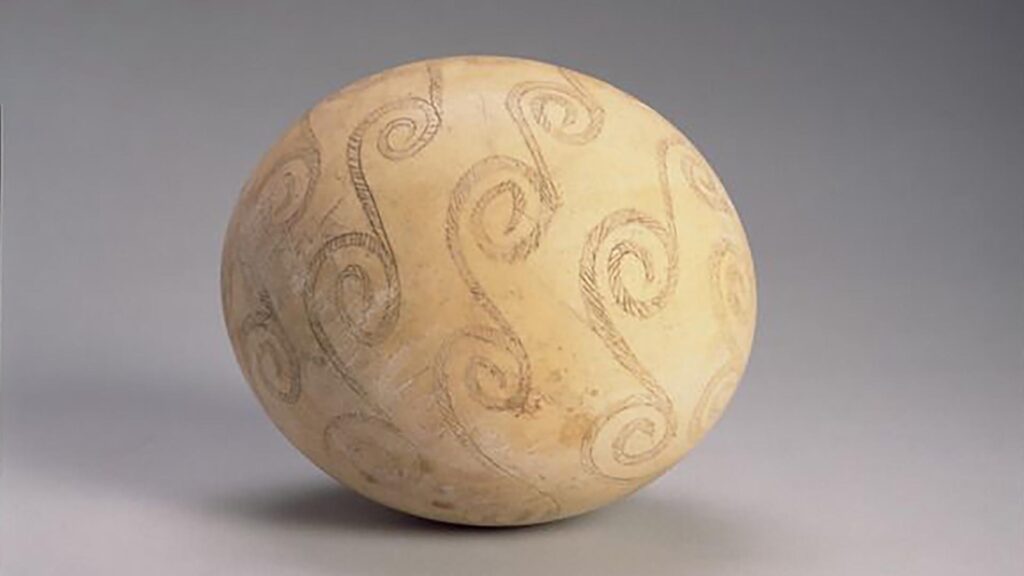
Eggs have been a symbol of fertility and rebirth for eons, so that this tradition might be even older. Decorating eggshells is an ancient practice, with 60,000-year-old decorated, engraved ostrich eggs discovered in Africa. Eggs were associated with death and rebirth, as well as kingship, in the pre-dynastic period of Egypt and the early cultures of Mesopotamia and Crete, with decorated ostrich eggs and representations of ostrich eggs in gold and silver, being commonly placed in the graves of the ancient Sumerians and Egyptians as early as 5,000 years ago.
The Candy Eggs are the Best
In the nineteenth century, candy makers in Central Europe began making Easter eggs. They did not become common in Iceland until around 1920.
Perhaps Icelanders were slow to adopt it because there was no Easter egg tradition or tax. That was primarily due to a scarcity of chickens. Chicken farming was uncommon in Iceland until around 1930, when imports of chicken eggs were prohibited for the first time.
Chocolate Easter Eggs
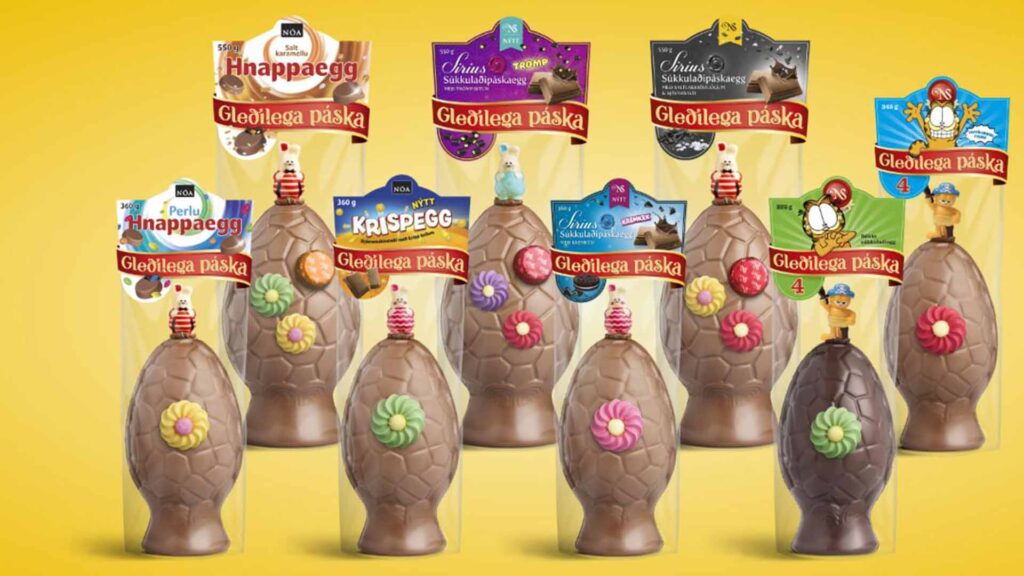
In 1914, stores began advertising many types of Easter eggs. And in 1925, there was an advertisement for Easter eggs “a large variety, many types. Chocolate and real marzipan”. By the mid-1930s, all the biggest candy factories (Nói Síríus and Freyja, still operating) had started manufacturing chocolate Easter eggs.
All grocery stores in Iceland are overrun with Easter eggs in the month before Easter. In 2020, the three largest candy manufacturers made almost 2 million Easter eggs… and they often sell out!
Only about 380.000 people live in Iceland, from young to old, so that means that every single person in Iceland could get about 5 Easter eggs.
In recent years, vegan and dairy-free easter eggs were added. Then there are dark chocolate eggs; others have licorice in the chocolate or puff balls. Then there are the eggs that confectionaries create and sell. And they are all in many different sizes and filled with candy.
The weather during Easter in Iceland
There’s an old saying in Iceland, “white Christmas means red Easter, red Christmas means white Easter”; red, in this instance, is snow-free. But one magazine in 1907 says, “often this has not come true over the years, but it has come true close to half as often as it has failed”. So, putting all your money on this bet wouldn’t be wise.
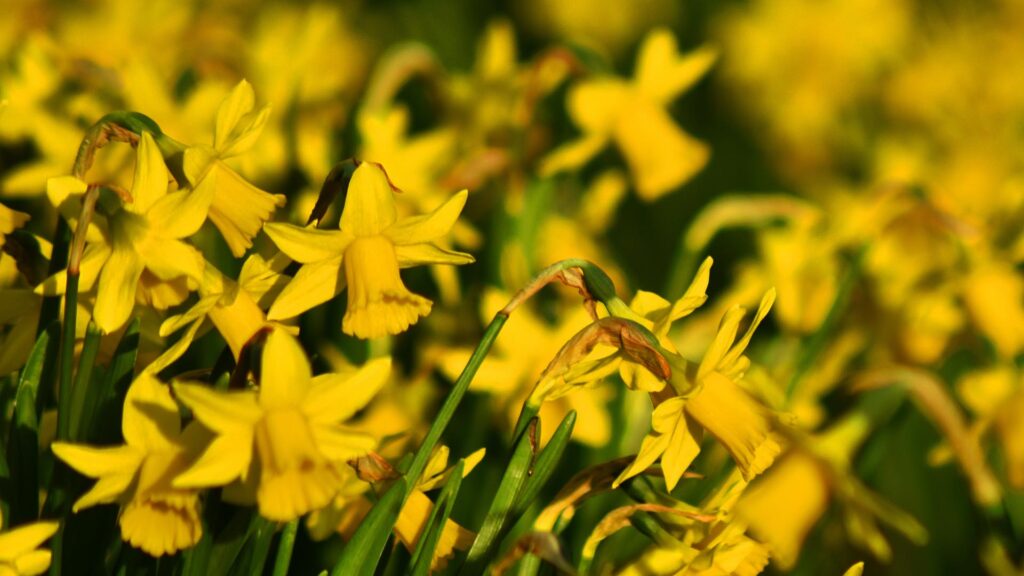
If you ask any Icelander about how the weather is generally during Easter. The majority will tell you it will probably be ok, but the chance of the “Easter Cold Spell” is excellent.
Icelanders believe the Easter Cold Spell occurs before or during every Easter, so we’re always prepared for it. However, because Easter can fall between late March and April, it’s difficult to say whether they always occur. According to a meteorologist writing on the University of Iceland’s Web of Science, cold spells are expected in late winter and spring. However, they do not always occur during Easter.
Unstable weather
“As Easter falls at different times of each year, weather events can be associated with them for quite some time. Weather events during a relatively wide period of each year can be called An Easter Cold Spell based on a discussion of the last 40 to 50 years. That means the Easter Cold Spell could last two weeks.
Iceland’s weather is typically unstable, with northern winds bringing cold weather and southern winds bringing warm weather. Sharp winds from the north are common during the two weeks preceding and following Easter. However, it can also happen every other two weeks during the spring.
People used to believe there were five to seven spring cold spells, with the Easter Cold Spell being one of them. However, the cold spells did not occur every year.”
Check out our blogs on Visiting Iceland in March and April and what to pack for travel in Iceland for more in-depth information.
Easter Traditions and Food
In the olden days, on the morning of Maundy Thursday, people often got thick milk pudding, boiled until red, before people went to church.
This was customary until the mid-19th century. It was said that the air quality in the church that day was not good since the pudding gave you flatulence.
On Good Friday, it was customary in some places only to eat something after 6 PM. Many people suffered that day because the mass was also longer than usual. In some places, extremely long psalms were sung, the whole Suffering of Jesus plus a long sermon afterward.
Afterward, it was customary to spank or whip children for all their sins during Lent because they were allowed to do whatever they wanted during those 40 days without punishment. This was also so children would take part in the suffering of Christ.
On Easter Morning, people ate Easter pudding, like was eaten on Maundy Thursday.
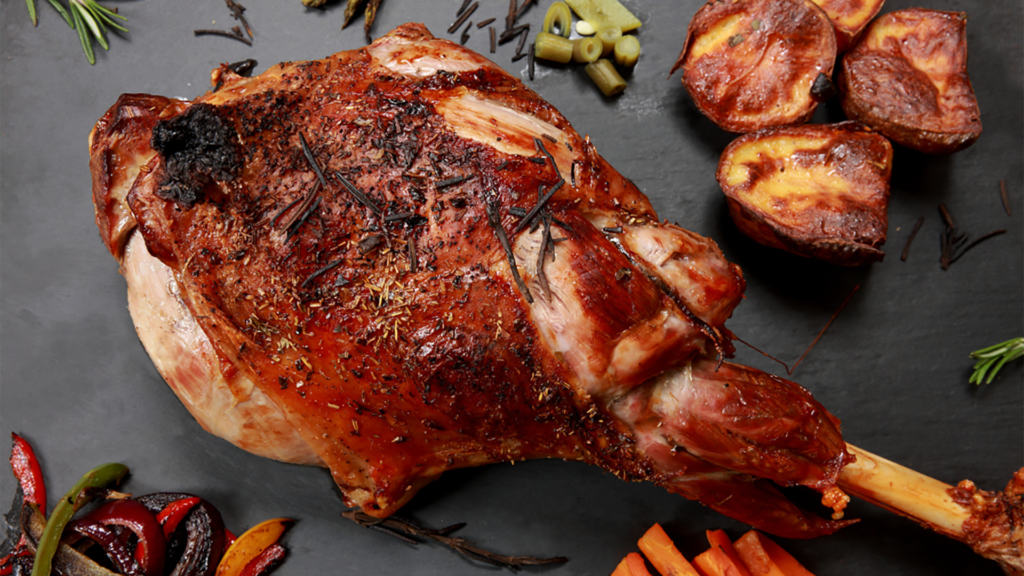
Today, it is customary to have a leg of lamb on Easter Sunday and drink malt and appelsín (like at Christmas).
On the morning of Easter Sunday, the kids in the household will search for their chocolate Easter egg somewhere inside their house. There is no tradition of searching outside for eggs like in many countries.
However, sometimes companies hold an Easter egg search outside for their staff and families.
What to do at Easter in Iceland
As we told you before, having fun in public on Good Friday was illegal until 2019. It was one of the most boring days of the year. However, in our fabulous modern times, bars and other places are allowed to be open.
The Wednesday before Maundy Thursday is like a Friday for most people, so you will find people going out on the town or to concerts and generally having a good time. This starts one of Iceland’s longest, if not the longest, party weekends.
In Ísafjörður in the Westfjords is a completely free music festival! Aldrei fór ég suður, or I Never Went South, is the brainchild of Mugison and his father and has been held almost every year since the mid-2000s.
It is on our list of the Best Music Festivals in Iceland and an excellent opportunity to visit this remote part of Iceland!
What Does Páskar Mean?
The Icelandic word for Easter, páskar, came to us from Germany, but they got it from Latin and Greek. In Latin and Greek, the festival is called Pascha (Greek: Πάσχα), a word derived from Aramaic פסחא (Paskha), cognate to Hebrew פֶּסַח (Pesach). The English word Easter, however, developed from an Old English word that usually appears in the form Ēastrun.
Saint Bede wrote about the etymology of the word in his 8th-century book The Reckoning of Time: “Ēosturmōnaþ (“Month of Ēostre” in Old English or “Paschal month” corresponding to April) was once called after a goddess of theirs named Ēostre, in whose honour feasts were celebrated in that month.”

